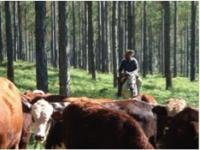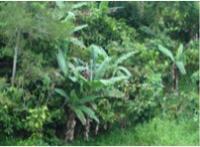Agroforestry: Merging Human And Environmental Needs
January 26, 2015
by guest author Elias Kohn, F&ES ‘16
It is no surprise that forestry was a major topic of conversation at the 20th Conference of the Parties to the UN Framework Convention on Climate Change that recently concluded in Lima, Peru. Deforestation and agricultural practices constitute a foundational climate and environmental problem. In the last century, human activity cleared roughly 350 million hectares (1.3 million square miles) of tropical forest and degraded an additional 500 million hectares of primary and secondary tropical forest. Agriculture and indirect impacts of land-use change contribute 52 percent of global anthropogenic methane, 84 percent of nitrous oxide and substantial CO2 emissions. Chemical applications, soil erosion, and altered nitrogen cycles compound the problems that current agricultural practices pose.
Fortunately, there is an alternative to these damaging practices. In fact, in Lima, eight South and Central American countries agreed to join the 20X20 Initiative in an effort to restore a half billion acres of forest and farmland. Rather than only mitigating the negative impacts of deforestation, 20X20 endorses agroforestry, a climate smart type of agriculture that can transition problems into positive solutions for restoration. Silvopasture, for example, a type of agroforestry, combines trees or shrubs with pastures and can increase animal productivity and forest cover without the negative impacts frequently incurred by conventional grazing.

Silvopastoral systems, such as this one (pictured) in Misiones, Argentina that combines hybrid beef cattle and loblolly pine, could be connected to additional agroforestry designs – windbreaks or riparian buffers – to create wildlife corridors on the ecosystem level. These multi-use corridors also sequester carbon, as agroforestry systems appear to surpass conventional agriculture sequestration and may even rival some natural forests. Additional benefits include manure as an organic fertilizer for yerba mate and a steady income between timber harvests.
Even with the Lima 20X20 announcement, agroforestry deserves more attention than it currently receives because it provides numerous environmental benefits while addressing socioeconomic concerns.
Consider the UN Millennium Development Goals. Agroforestry merges environmental sustainability (Goal 7) with human needs such as poverty and hunger alleviation (Goal 1). Reforestation through perennial fruit and nut bearing crops offers a safety net when conditions prevent a productive annual crop season and offer nutritional variety limited by certain monoculture cash crop production. Simultaneously, tree crops, such as cacao and tea production in Southeast Asia, are increasing incomes and economic growth for small landowners. The African Plum, along with a huge variety of additionally underutilized tree crops, offers similar income possibilities.
Clean water, lower carbon emissions and reforestation should not require less food production, inequitable resource distribution, or staggered economic development.
Goal 3 of the UN Millennium Development Goals seeks gender equality and female empowerment. Interest in the African Plum is growing among women in Cameroon, as the need to pay school fees and buy uniforms overlap with the Plum marketing season. Women comprise sixty to eighty percent of developing world farmers and account for 75% of household food production, yet receive less than 10% of agricultural extension delivery. Long-term tree crops that coincide with growing market demand for new fruits and nuts may offer a way to shift this imbalance to a more equitable distribution.

Unfortunately, all of these potential benefits remain severely restrained. Agroforestry designs have proven their effectiveness, but current laws and policies obstruct greater implementation.
Of the major policy restrictions, land tenure stands out as one of the most
daunting. Agroforestry is a long-term investment where property rights dictate decisions and management. Policy leaders could promote this design system that addresses environmental challenges and human needs by changing land tenure policies and allowing this practice to thrive.
Initiative 20X20 may bring attention, technical, and financial support to this issue, but will it bring the needed policy changes?
Next week, the second post in this series will address land tenure as a barrier to more widespread agroforestry practices.